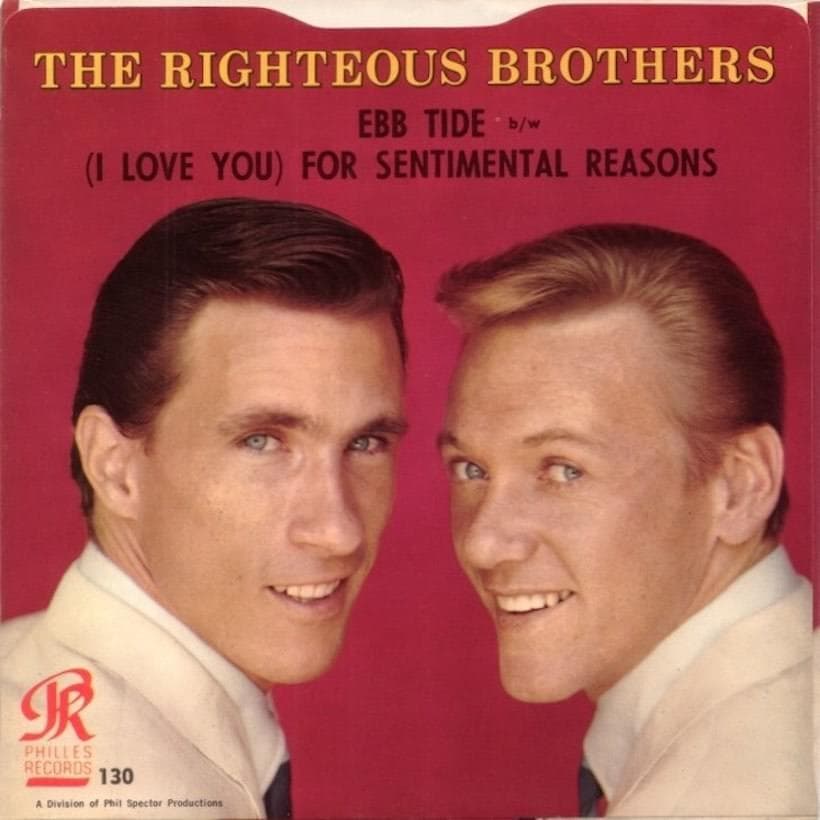
The Righteous Brothers’ Ebb Tide: A Swelling Anthem of Passion and Desire
Few songs capture the tidal pull of love and longing as powerfully as Ebb Tide by The Righteous Brothers. Originally written by Carl Sigman and Robert Maxwell in 1953, this classic found new life in 1965 when the iconic duo of Bill Medley and Bobby Hatfield infused it with their signature brand of emotional intensity. Their version of Ebb Tide is more than just a recording—it’s a masterclass in vocal artistry and dramatic interpretation, turning the simple metaphor of the ocean’s ebb and flow into a sweeping testament to human desire.
From the moment the first lush orchestral notes swell, Ebb Tide sets an evocative stage. The arrangement, grand and cinematic, mirrors the vast, unpredictable power of the sea, with crescendos and diminuendos mimicking waves rising and receding. It’s a perfect complement to Bobby Hatfield’s soaring lead vocal, which is nothing short of extraordinary. Hatfield’s delivery moves effortlessly from tender whispers to powerful climaxes, capturing both the fragility and the intensity of longing. His performance is almost operatic in its precision and emotional depth, yet it remains grounded in the soulful warmth that defines The Righteous Brothers’ style.
The lyrics of Ebb Tide are simple but deeply evocative, painting a picture of love as a force as natural and inevitable as the tides. Lines like “At last we’re face to face, and as we kiss through an embrace” evoke an almost primal connection, heightened by the imagery of the sea’s eternal rhythm. It’s a love song, but also a meditation on the cyclical, uncontrollable nature of human emotion. The ocean serves as both a setting and a metaphor, underscoring the themes of yearning, surrender, and unity.
The Righteous Brothers’ recording of Ebb Tide was part of their album The Righteous Brothers Singers and followed the enormous success of hits like Unchained Melody and You’ve Lost That Lovin’ Feelin’. By this time, the duo had firmly established themselves as masters of the blue-eyed soul ballad, and Ebb Tide further cemented their reputation. While it may not have reached the same towering heights on the charts as some of their other songs, its impact lies in its timelessness and its ability to move listeners across generations.
One of the most striking aspects of this rendition is its production. Under the guidance of Phil Spector’s famed “Wall of Sound” technique, the song achieves a rich, layered texture that envelops the listener. Every element, from the swelling strings to the subtle echoes, is carefully designed to amplify the drama of Hatfield’s vocal, making Ebb Tide feel as immersive as standing at the water’s edge.
Ebb Tide is a song that demands to be felt as much as heard. It’s an emotional journey, one that rises and falls with the urgency of love itself. Whether it’s the intimacy of Hatfield’s quieter moments or the breathtaking force of his crescendos, the song taps into something universal: the profound connection between human emotion and the natural world. For fans of The Righteous Brothers, it’s a stunning example of their unparalleled ability to combine technical skill with heartfelt expression. For anyone encountering it for the first time, it’s an unforgettable plunge into the depths of passion and beauty.
Even today, Ebb Tide remains a quintessential romantic ballad, a reminder of the power of music to evoke not just a mood, but an entire world of feeling. It’s a song that swells like the sea itself, leaving listeners awash in its beauty long after the final note fades.